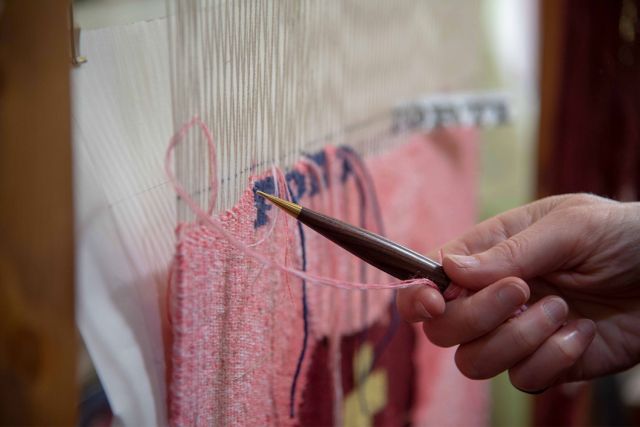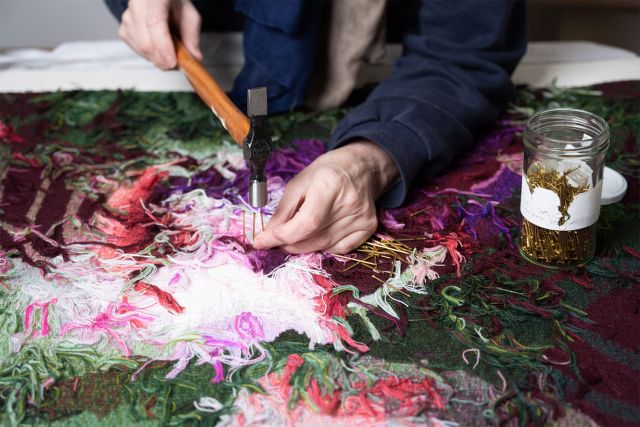Here is a sculpture made from two kiln-glass processes. Firstly, coarse grains of gravel-like glass are fused within a mould to produce the grid shape, which is so prosaic within our urban environments. In a second firing, the glass grid is bent by subjecting the glass to heat and gravity. An aggregate of soft neutral tones with hints of pink and green has been used here, which is suggestive of architectural materials such as granite and concrete.
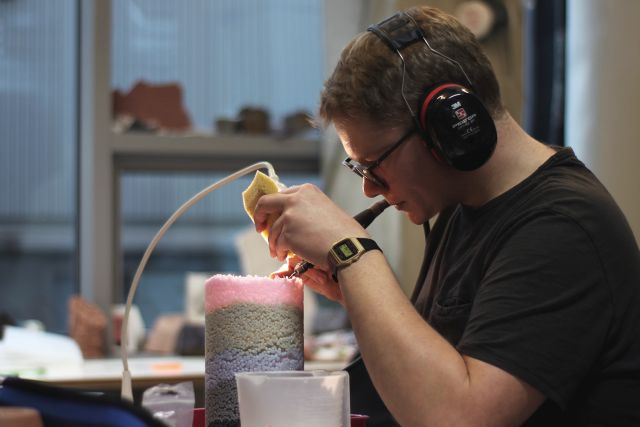
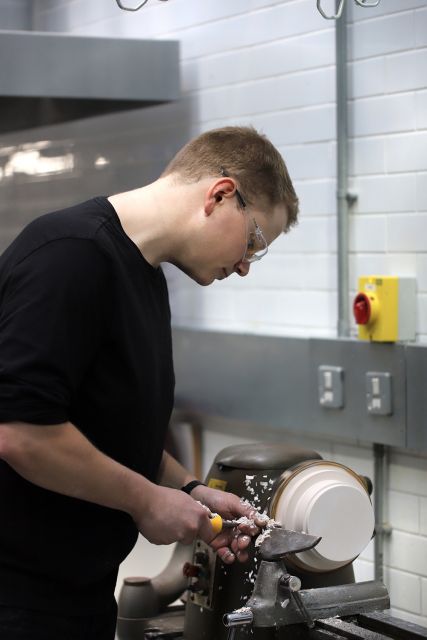
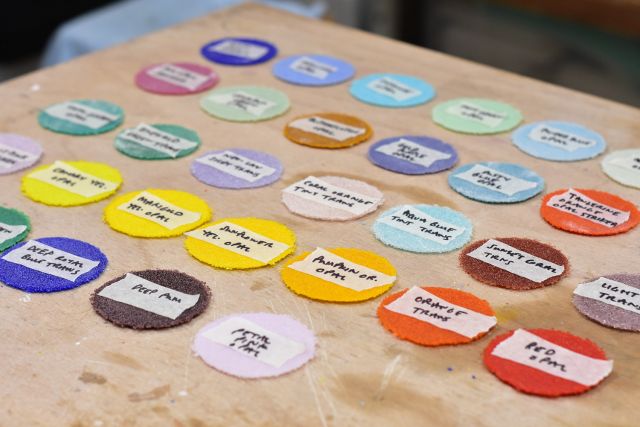

Joshua Kerley
- Glass sculptor
- Salisbury, United Kingdom
- Master Artisan
Challenging the material perceptions of glass
- • Joshua makes glass creations that do not look like glass
- • He creates curious and colourful objects
- • He experiments with materials and processes to achieve unique effects
Joshua Kerley is not preoccupied with the traditional properties of transparency and translucency of glass. Instead he works with opaque glass, or techniques that create opacity in glass. His practice is informed by a rich heritage of material imitation in glass making. He is inspired, for example, by the Venetians who mimicked the material qualities of semi-precious stones. Joshua makes objects that are inherently un-glass-like, and mimic the physical properties of other materials. He aims to reassess traditional perceptions of glass. His practice moves deftly between art, design and craft, creating objects that transcend boundaries and challenge our comprehension of the material world.
Read the full interviewWorks
Photo: ©Alick Cotterill

Photo: ©Alick Cotterill
This is a sculptural assemblage of slumped cobalt blue sheet glass and London brick secured with a rubber band. The brick is both a mould upon which the glass is shaped in the kiln, and part of the final work. As such the glass and brick fit together seamlessly, but the work can also be dissembled and viewed as component parts. The assemblage tells the story of its making process.

Photo: ©Alick Cotterill
Here are a sculptural vessel and lid that suggest utility and function but do not necessarily offer it. Both the jar and lid combine deep cobalt blue with soft pink hues. The jar is made using a technique known as pâte de verre, a process that involves mixing sugar-like grains of glass into a paste and applying a thin layer inside a mould which is then fired in a kiln so the grains of glass fuse together. The lid is made by casting glass with a foaming agent, which cause the glass to froth, foam and expand.

Photo: ©Alick Cotterill
This is a composition of three cast-glass architectural forms in soft blue, pink and lavender hues. The addition of foaming agents and tin oxide aerates and opacifies the glass, giving it a foam-like and mottled appearance. Originally made for a project with the Worshipful Company of Tin Plate Workers, this composition celebrates the tin mining heritage and post-industrial landscapes of Cornwall’s ex-mining communities.

Photo: ©Alick Cotterill
This is a sculptural object made from many tiny glass beads which are lightly fused or sintered within a mould. The colour gradates from a rich cobalt blue to a soft pink. All of the beads, often known as frit balls, are handmade by Joshua Kerley.





